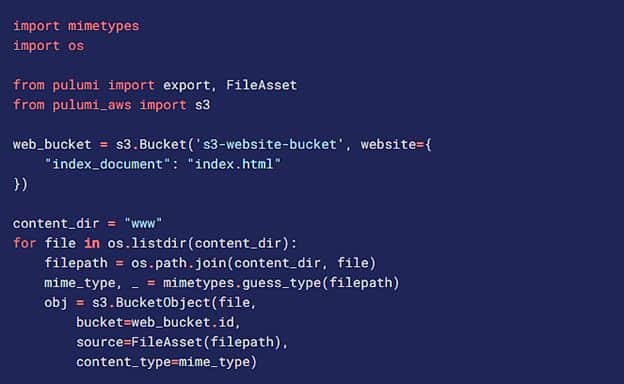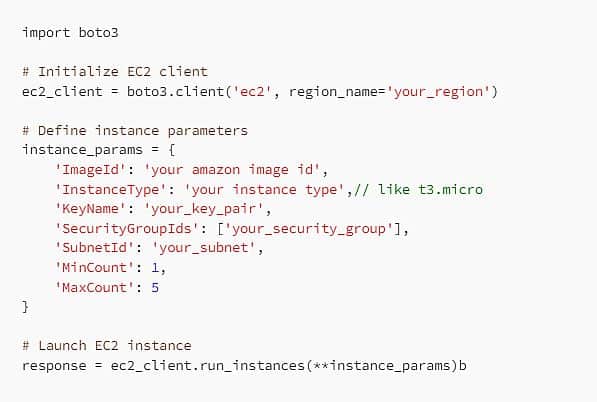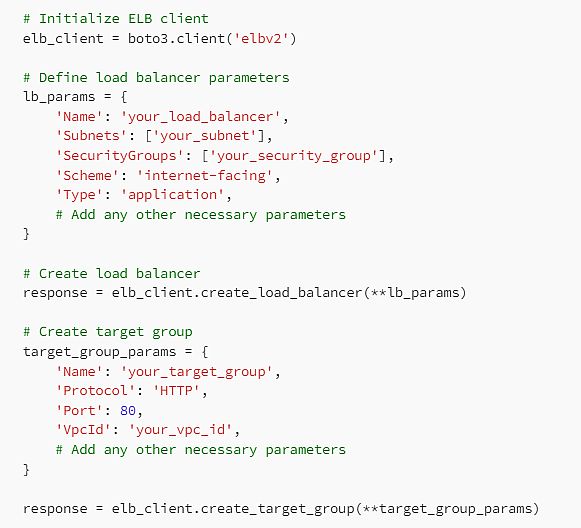An Overview of Python for Cloud Computing
Developers

Python is one of the most used and best-loved computer languages. Even 30 years after its creation, it remains one of the most popular languages, with millions of users. What inspires this long-term devotion among developers? And how can Python help you build your app, program your website backend, analyze your data, and anything else you need to program in your cloud environment?
Because of its simple syntax and easy-to-read formatting, Python is designed from the start to be more readable and easy to understand. It even includes English words where other languages might use punctuation like curly brackets or semicolons.
Fun fact: Despite the snakey logo, Python was actually named after the BBC comedy sketch series Monty Python’s Flying Circus. And this language is more relevant than ever now, as Python is commonly used for data science applications, as well as for coding generative AI models, like teaching a chatbot how to answer customer questions.
Python is a high-level, open-source, interpreter-based programming language. Its first version was published in 1991 and the current version (2024) is Python 3.13. In addition to the easy-to-learn syntax, Python boasts main features like dynamic typing and a large repository of third-party libraries, including tools for data management, data processing, visualization, Web connectivity, and networking. It’s great for scripting and rapid application development and supports object-oriented programming.
Exploring Python Features and Data Types
Python provides the following data types:
- Numeric (int, float, complex)
- String (text sequence)
- Boolean (bool)
- Binary (bytes, bytearray, memoryview)
- Sequence (list, tuple, range)
- Mapping (dict)
- Set (set, frozenset)
- None type
Python supports implicit and explicit data conversion with statements like:
> float(4) -> returns 4.0
> int(-7.2) -> returns -7
Lists, Dictionaries, Tuples, Sets in Python
Lists are indexed structures of elements, i.e. comma-separated items. A list is declared as:
> list1 = [‘chemistry’, ‘biology’, 2015, 2020]; (it can contain diverse types of data)
A dictionary is a collection of key-value pairs. The key is separated from its value by a colon (:), and the items are separated by commas:
> dict1 = {10:”ten”, 20:”twenty”, 30:”thirty”}
A tuple is a sequence data type. It is an ordered collection of items. Each item in the tuple has a unique position index, starting from 0.
> tup1 = [‘eggs’, ‘milk’, 2022, 2024];
Sets are unordered collections of unique elements. Unlike lists or tuples, sets don’t allow duplicate values – each element in the set must be unique. Sets are mutable, you can add or remove items after a set is created.
> set1 = {11, 16, 21, 34, 45}
Why Python on the Cloud?
By utilizing Python on a cloud server, you can perform multiple operations.
Many Python packages can be utilized for DevOps automation operations and infrastructure orchestration. Here are a few examples:
- Ansible – a powerful automation tool that allows you to automate tasks such as deployment, configuration management, and orchestration. It uses Python to execute tasks on remote machines and can manage both on-premises and cloud infrastructure.
- Terraform – a tool for building, changing, and versioning infrastructure. It uses a declarative syntax and can be used to manage infrastructure resources across multiple providers, such as AWS, Azure, and Google Cloud.
- Boto3 – the Amazon Web Services (AWS) Software Development Kit (SDK) for Python. It allows you to use Python for AWS services such as EC2, S3, and RDS. Boto3 can be used for tasks such as provisioning and managing AWS resources.
Cloud Automation and Monitoring
Python scripts can be used to automate tasks, manipulate data, or perform any number of other functions. They can be run from the command line, integrated into larger software systems, or run as standalone applications.
By utilizing Python’s asynchronous libraries, such as Asyncio, developers can manage hundreds of network connections at once, a capability needed for streamlining cloud resource management.
Python’s native support for robust logging and monitoring tasks enriches automation, thereby empowering cloud applications against failures and ensuring they meet strict latency optimization requirements.
What Can You Do with Python on the Cloud?
Python can be used efficiently in many cloud computing tasks. It can process multiple data types (text, images, audio, video), thus it is very suitable for cloud applications.
Python possesses readily available libraries that can be utilized on the cloud. For instance, Python is successfully used for the following cloud-oriented tasks:
- Cloud monitoring
- Cloud logging
- Tracing cloud
- Reporting errors in the cloud
- Help in diagnosing bottlenecks and setbacks
Automation Tasks
Automation means to increase productivity and minimize errors in repetitive activities instead of manual human intervention. Python can automate repetitive tasks like resource provisioning. Task schedulers can be used to trigger your Python scripts at predefined times.

Tasks that can be automated by using a Python code include:
- Repetitive processes
- Data analysis and reporting
- File and directory operations
- Web scraping and data extraction
- Database interactions and SQL operations
- GUI Interactions
- Machine learning and AI tasks
- Network monitoring and security
- Social media operations
Infrastructure as Code (IaC)
Networks, servers, block storage, and other infrastructure components can be defined by code, e.g. infrastructure as code (IaC), which is typically programmed in Python. Version control is easy in Python, which facilitates effective teamwork, tracking changes, and reproducibility. In order to provision, configure, and manage infrastructure resources, automation tools can utilize Python code.
IaC improves consistency, reduces manual tasks, and enhances the scalability in infrastructure management. Python provides easy IaC adoption. Here are some of the most popular reasons developers and engineers love Python:
- Ease of use – Python enables developers to define infrastructure settings with a declarative approach, making it easy to manage complex infrastructures.
- Large number of libraries – Python possesses many libraries (like Fabric, Ansible, and Terraform) that facilitate infrastructure provisioning, configuration, and orchestration.
- Flexibility and extensibility – Python enables the integration of different tools (APIs), allowing teams to build custom solutions and interact with multiple cloud platforms.
- Testing and validation – Python’s testing frameworks (eg pytest) allow teams to conduct automated tests for infrastructure code, ensuring its accuracy and reliability.
- Configuration management – Python-based tools (like Chef or SaltStack) provide robust configuration management capabilities, allowing infrastructure automation.

CI/CD: Continuous Integration and Deployment Pipelines
A typical CI/CD pipeline with Python automation can involve the phases of code compilation, unit testing, integration testing, and deployment. CI/CD pipelines can run on Python, enabling automated testing, validation, and deployment of infrastructure changes.
To integrate Python scripts into your continuous integration process, you’ll need Selenium Python driver. The execution of Python scripts at different pipeline stages requires tools such as GitLab CI/CD, Jenkins, or Travis CI.
- Virtual environments will enable dependency management and ensure consistency across different platforms.
- Test automation will ensure that code changes do not introduce bugs or relapses.
- Performance monitoring of your CI/CD pipeline will analyze the results to identify areas for improvement.

When to use Python and when to use SQL?
SQL (Structured Query Language) is created to query, manage, and transform data stored in relational databases. On the other hand, Python is a general-purpose programming language used to develop web applications, apps, games, and more.
SQL’s multiple data types enable quick column definition within a relational data table. Python is helpful because of its adaptability to custom type definitions and strong object capabilities. Ultimately, each language has its own advantages when working with various datasets.
While Python can assist in the development of simple programs or full apps, SQL is useful in searching for specific information inside existing databases. Depending on your requirements, Python and SQL can both be effective tools for working with databases. Which one you choose will ultimately rely on your project needs.
Conclusion
Python’s versatility and large number of libraries make it a great choice for managing cloud applications. By utilizing Python’s capabilities, companies will conduct faster deployments, infrastructure automation, and improved scalability.


